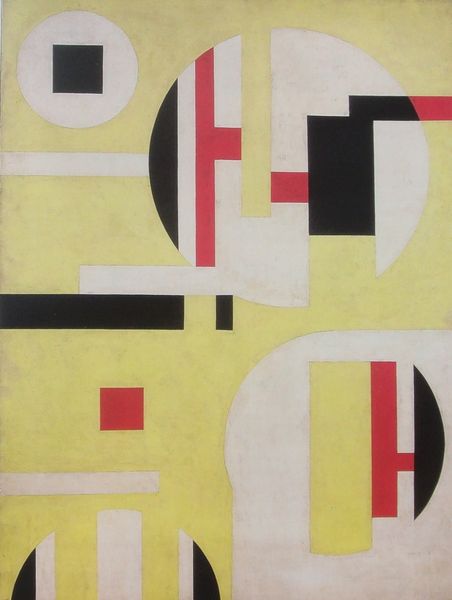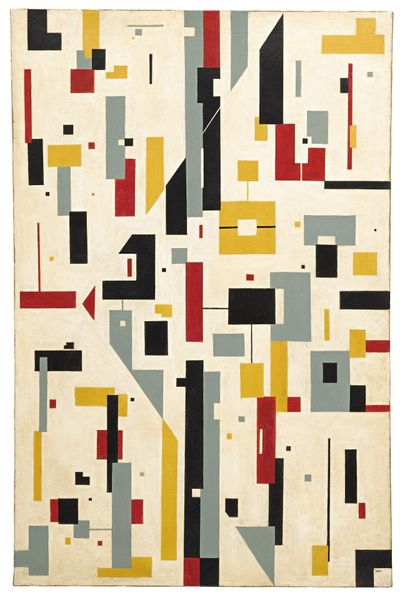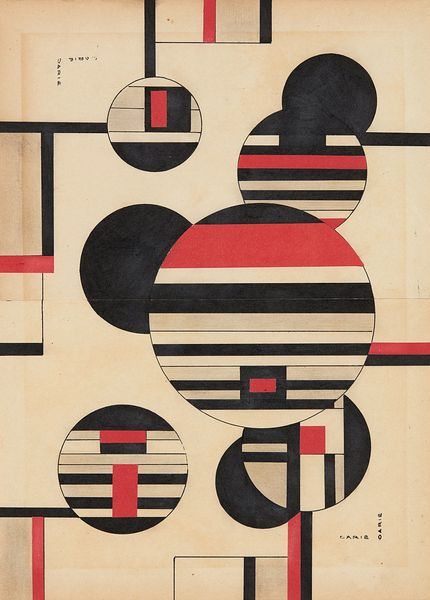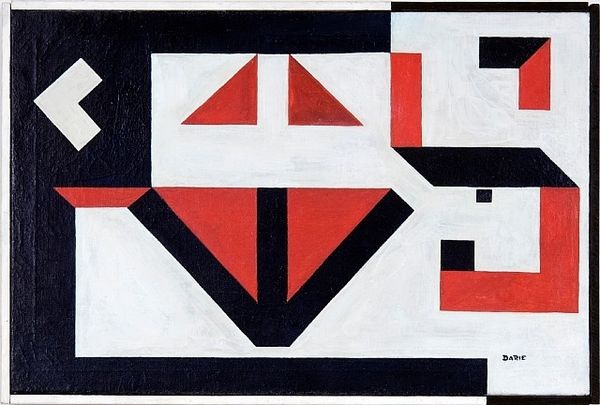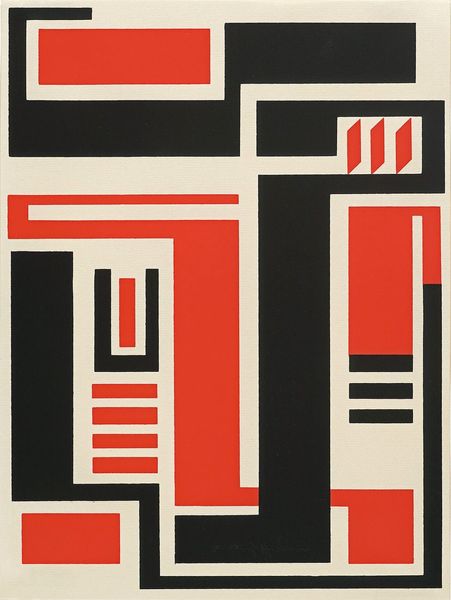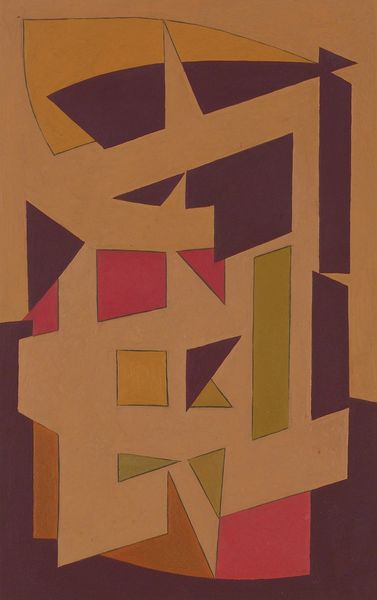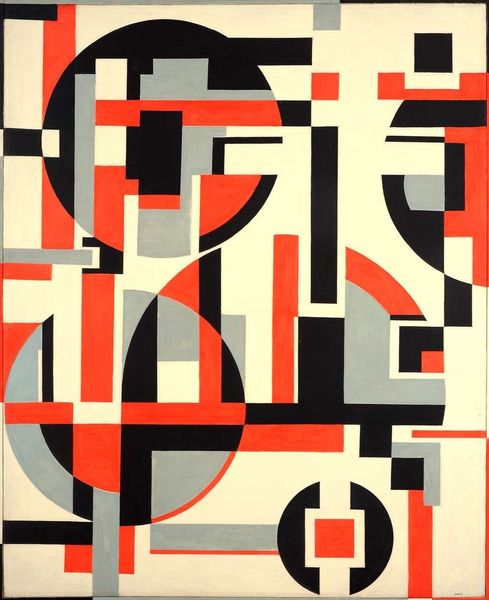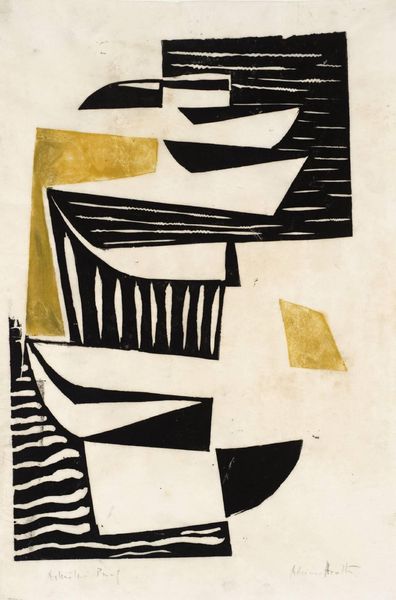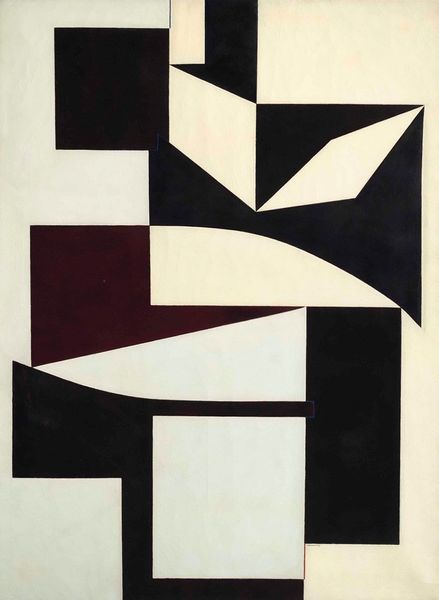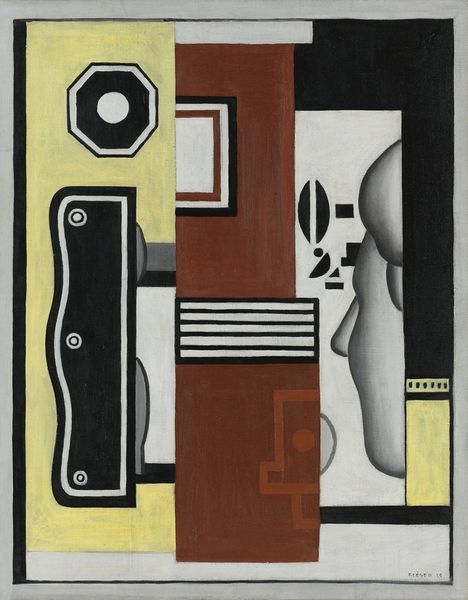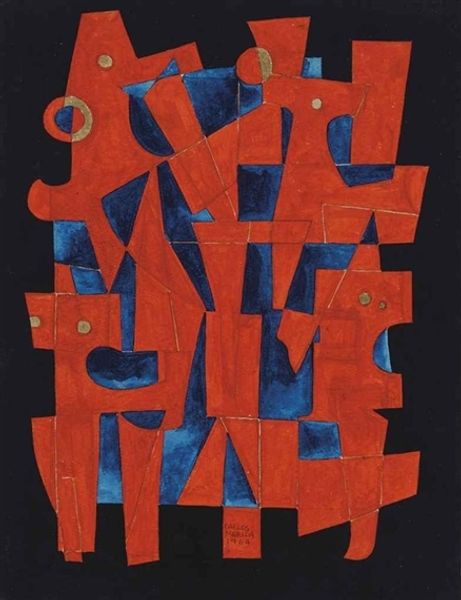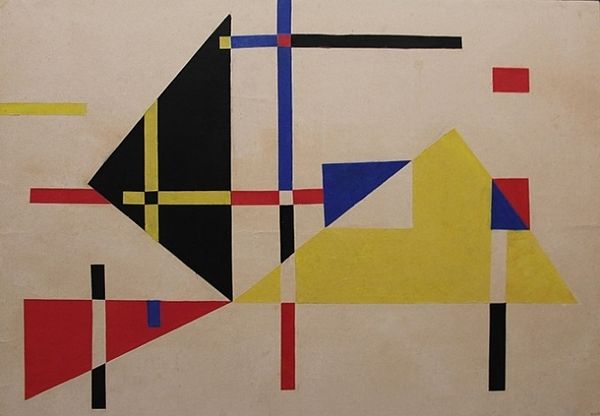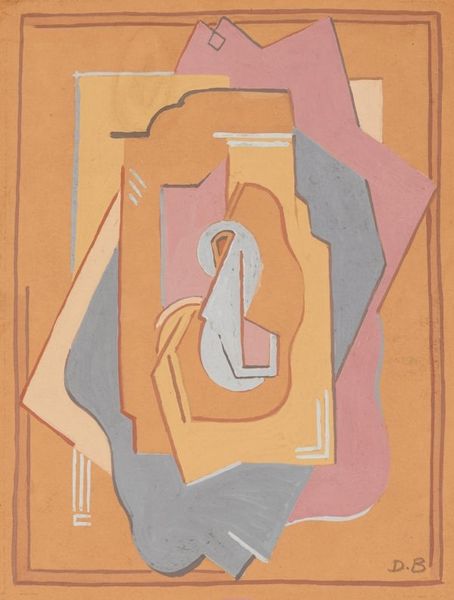
painting, oil-paint
#
abstract-expressionism
#
non-objective-art
#
painting
#
oil-paint
#
op art
#
pop art
#
colour-field-painting
#
form
#
geometric pattern
#
geometric
#
geometric-abstraction
#
abstraction
#
line
#
modernism
#
hard-edge-painting
Copyright: Sandu Darie,Fair Use
Curator: Looking at Sandu Darie’s "Untitled" from 1955, oil on canvas, what strikes you first? Editor: The way the circles are disrupted by the geometry within—a real tension between the organic and the constructed. The earthy ochre grounds the sharp red, black and white shapes. There's an appealing tension. Curator: Darie, deeply influenced by geometric abstraction, returned to Romania from Paris just before creating this piece. Romania was undergoing rapid sovietization, and abstract art was seen by the regime as formalist, and degenerate, a stance against social realism, even anti-social. It had consequences. Editor: Knowing that context changes how I see the painting. The constraints under which it was created… Did that scarcity of acceptance affect the materials themselves? How accessible were quality paints in that era and location? Curator: Material access was certainly challenging. These sharp geometric forms can also be seen as a radical act, a rejection of imposed aesthetics. Darie was risking a lot by painting abstractly, refusing to conform to the socialist realism demanded by the communist regime. This can be linked with broader concerns about the repression of dissent. Editor: Right. And it is a defiance built not with grand gestures but simple shapes rendered skillfully with humble materials in wartime. It reminds me that materiality in itself speaks of power dynamics, reflecting whose voices and expressions get amplified. Curator: Exactly, so the materials themselves also become symbolic carriers. He continued to develop an interest in kinetic art, the influence of which can be seen in the geometrical configuration and compositional layout of this work. I think we often fail to think that the language and concerns of mid-century geometric abstraction had direct consequences. Editor: Thanks for shedding some light on the political, historical, and social context. This is why thinking about the making of this work is so relevant, it helps to see how even seemingly apolitical shapes take on meaning in an environment where any deviation from norms are charged. Curator: And that makes this geometric arrangement, in its historical setting, far more profound than merely an exploration of form. Editor: Precisely. Seeing this piece now is thinking about constraints but celebrating ingenuity.
Comments
No comments
Be the first to comment and join the conversation on the ultimate creative platform.
